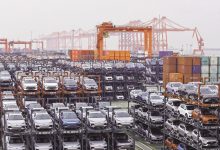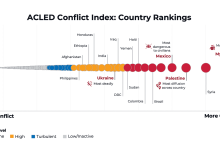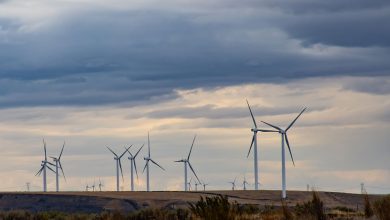Record on the Liquefied Natural Gas Market
Capacities of 170bcm to be Commissioned in 2019
Global natural gas demand is growing strongly, supported by more and diversified supply sources, and this context is facilitated by the ever-increasing demand for liquefied natural gas (LNG). The strong increase in LNG demand in the last three years will continue in the future, boosted by the investment projects in LNG facilities throughout the world, the International Energy Agency (IEA) says in its report for 2019, recently published.
Much of the increase in LNG consumption is taking place in countries where LNG competes with other energy sources, meaning LNG importers want more flexibility. Increased transactions, together with the occurrence of new players on this market are signals that the Liquefied Natural Gas Market is ready to respond to these increasing demands. This year’s report focuses on three topics. First of all, it provides an analysis on the flexibility of the Liquefied Natural Gas Market based on a detailed evaluation of the recent contractual activity. It analyses the evolution of flexibility in LNG supply of traditional buyers in Asia and how this flexibility could contribute to increasing the security of supply for other rapid growing markets in Asia. Last but not least, the report focuses on challenges in north-western Europe on the security of gas supply, given that a major source of domestic supply, the Groningen field in the Netherlands, is phased out.
Transactions reached 420bcm/year in 2018
Demand for natural gas – and particularly for liquefied natural gas – is growing strongly. Gas consumption increased by approximately 4.6% in 2018 at global level, the largest annual growth rate since 2010. But LNG demand is growing even more quickly. The commissioning of liquefaction capacities, of over 50 million tons per annum (Mtpa) in in 2018 (the equivalent of 72 billion cubic meters per year) allowed LNG transactions to grow by 10%, reaching 420bcm/year. The availability of US LNG exporters, the main source of supply growth in the medium term, and the increased number of buyers indicate that the market responds to these growing requests, the report mentions.
Flexibility of contracts, a key condition
On Liquefied Natural Gas Market, buyers request increasing quantities and under more flexible terms. Therefore, the share of contracts without a direct recipient has increased since 2015, reaching a share of 40% of total LNG deliveries in 2018. Moreover, the volume of spot trading increased by almost 60% since 2015, to over 100bcm/year, accounting for almost a quarter of the global LNG trade. The flexibility of the global gas market in the following years will continue to be crucial, as natural gas plays an essential role in energy transition to a cleaner and more sustainable system. Global gas security review is addressed in IEA report from three perspectives. First of all, it monitors the progress of flexibility of LNG contracts at global level. Secondly, the report analyses the flexibility mechanisms used by the major LNG importers in Asia. Finally, this year’s report weights the challenges faced by north-western Europe in terms of security of gas supply and assesses the importance of flexibility of its supply.
The willingness of US LNG exporters (the main source of LNG supply growth in the medium term) to provide LNG on a destination-free basis, the rise of portfolio players as key buyers and the emergence of equity lifting as a significant business model are all signs that the Liquefied Natural Gas Market is responding to these increasing demands.
The flexibility of the global gas market in the coming years will continue to be crucial, as natural gas plays a critical role in the energy transition towards a cleaner and more sustainable energy system. This year’s Global Gas Security Review addresses three issues. First, it monitors the progress in global LNG contractual flexibility by providing an update on the Liquefied Natural Gas Market flexibility metrics. Second, the report analyses the flexibility mechanisms used by traditional major LNG importers in Asia. While these importers may experience little or no growth, their considerable imports may be an important source of potential flexibility for growing markets elsewhere in Asia. Finally, this year’s report weighs the challenges facing north‑western Europe regarding gas supply security and assesses the importance of its ‘gas flexibility’ as a major source of production – the Groningen field in the Netherlands – is phased out.
Portfolio players boosted investments
LNG contracting activity witnessed growth in 2018, reaching the highest level in the last five years, and a large part of this growth was generated by the development of new liquefaction projects. Portfolio players continue to be key to this increased activity, getting involved in all liquefaction projects for which the final investment decision (FID) was adopted during last year. This increased activity can be attributed to the desire of portfolio players to reconfigure their portfolios, so that they can provide flexibility to the Liquefied Natural Gas market and secure long-term deals, in line with the anticipated increase in LNG demand, the IEA report shows.
Investments from own funds, preferred
The equity-lifting model for financing liquefaction projects has been increasingly used by investors. It allows contractors/partners to have access to the LNG volumes of the project proportionate to their equity stake and, as such, secures both the economic viability of the project and the volumes contracted under long-term agreements. Equity lifting has enabled some of the largest LNG liquefaction projects to reach the financing phase, thus ensuring an additional LNG production and contributing to a balanced global gas market and security of supply. The major companies that have already chosen the equity-lifting model include LNG Canada, Greater Tortue FLNG and Golden Pass LNG.
New projects, supported by long-term contracts
Long-term deals have dominated the recent LNG contracts, reaching a share from 74% in 2018 to 92% in 2019. Moreover, the large contracts (over 4bcm/year) and medium-sized contracts (2-4bcm/year) have increased significantly, accounting for 56% and 82% respectively of total volumes signed in 2018 and 2019 (to date). This is in contrast to the last three years, when the majority of deals were for volumes under 2bcm/year.
89% of the contracted volumes, without fixed destination
The flexibility of contracts is much more appreciated, despite the continuous reliance on long-term transactions. Longer-term contracts do not necessarily mean a lower flexibility. Destination flexibility becomes a common feature in contracts for all durations. In 2018, 58% of the volumes contracted and linked to a project for which the financing decision has already been made did not have a fixed destination, and in 2019 they reached 89% of the volumes. This is, besides other forms of flexibility incorporated in contracts, a way to allow buyers to adjust the volume and schedule of deliveries.
Innovation in contracting for a higher regional security
Growth on the Asian Liquefied Natural Gas Market is determined by newer importers, while the demand of traditional buyers is expected to be stagnant. Most traditional buyers in Asia import LNG under sale and purchase agreements (SPAs). In practice, LNG SPAs have clauses relating to volumes, destination, delivery schedule and transport. In general, long-term contracts allow a greater commercial flexibility, as the contracted volumes are managed throughout several years. Thus, the buyers’ obligation to take over the LNG quantities or the sellers’ obligation to deliver the LNG quantities can be offset by various methods, and this flexibility has evolved in various ways. Thus, the buyers can resort to the entire LNG volume contracted or the unwanted quantities can be diverted and resold on other markets when an adjustment is needed. Practical experience shows that the flexibility mechanisms incorporated in LNG SPAs can be better exploited through regional cooperation, the parties benefiting from the synergies arising from short transport distances. Moreover, a greater flexibility of contracts is implemented as new public procurement strategies emerge, including the creation of joint ventures, joint procurement with other markets and expanded reloading capabilities. Through the creative use of these instruments, traditional buyers in Asia are able to become LNG sellers on the secondary market, providing intra-regional flexibility for emerging buyers. It is estimated that 15bcm/year of the volumes contracted by traditional LNG buyers in Asia have flexible destinations. This flexible volume in terms of destination could cover up to 15% of the forecast LNG demand of emerging buyers in Asia. More recently, Japanese importers also invest in the development of LNG infrastructure to serve the Asian market. Moreover, they are actively developing their trading capacities and encourage the new demand for LNG in the Asia-Pacific region by getting involved in distribution and bunkering activities. Harmonization of regulations related to receiving ports and regasification facilities could facilitate intraregional trade and hence improve security of supply.
Transformation of the energy system in north-western Europe
The import requirements of north-western Europe are expected to grow by one fifth (or almost 40bcm/year) in the following five years, as the domestic gas production enters a phase of rapid decline, while the domestic consumption will remain constant. Phase-out of Groningen field will require the expansion of conversion facilities in the Netherlands. Challenges relating to gas supply come at a time when natural gas becomes increasingly important for electricity security. It is expected that electricity in north-western Europe will suffer a deep transformation, with an increasing share of renewable energy in the electricity mix, in the context in which the retirement of 45 gigawatts of nuclear and coal-fired power generation is announced for the next five to six years. Consequently, gas-fired electricity generation will play an increasingly important role in balancing the system. According to the quoted document, gas will ensure almost all the ‘thermal swing’ necessary to meet the increasing demand for energy. In this context, the need to increase the flexibility of the gas system in north-western Europe requires a regional approach. This could be ensured by developing an additional import capacity, improving interconnection and harmonizing regulations on gas storage. The consolidation of gas system flexibility in north-western Europe would also strengthen the position of the region within the global gas market, as this would allow timely and cost-efficient responses to changing global supply–demand dynamics.
Key discoveries
Global gas markets continued to consolidate and evolve towards greater flexibility, determined by the increasing role of portfolio players in the transformation of business models, of contractual trends etc. The contracting activity in 2018 reached the highest level since 2013, especially as a result of occurrence of new LNG projects. In 2018 and 2019 there was a gradual change of the investment activity compared to the past years. After two years of low activity, the investment decision was made for several projects last year, and this trend was amplified in 2019. According to estimates, projects with a total capacity of 170 billion cubic meters of liquefied gas would receive this year the approval for investments, which means an increase by three times compared to 2005, when projects for which the investment decision was made totalled only 70bcm. Of total contracts concluded in 2018 related to new projects that received green light, 42% came from North America.
Chinese importers go with fixed destination
The number of contracts with flexible destination concluded in 2018 was higher than in the previous years, but the inherited contracts with destination clause covered the largest LNG volumes traded. For example, the People’s Republic of China is rapidly expanding its imports, and most of the contracts last year and this year were concluded having fixed destination. Also, the volumes contracted by China having as source the new projects following to be built accounted for 20% in 2018 and 22% in 2019. Boosted by measures taken for the improvement of air quality, as well as by the problems faced in gas supply in the winter of 2017, Chinese buyers thus tried to reduce their exposures to the risk of supply interruption and that relating to the volatility of LNG prices.
Japan and South Korea, 60% of the Asian demand
Demand from traditional buyers, Japan and South Korea, is estimated to remain constant or decrease gradually, depending on LNG use in electricity generation. However, with or without the decline, these traditional buyers will still account for over 180bcm/year of purchases by 2024, or 60% of Asian LNG demand. Taking measures to ensure solid supply sources has been a key objective for these buyers. Thus, over 85% of LNG purchases of traditional buyers in Asia are long-term contracts, and the average duration of a contract in the portfolio of traditional buyers is 20 years.
What happens in our region?
It is interesting to see what happens in this part of Europe. Russia does not stand idly by and is preparing itself for the LNG offensive that could come from the US. Thus, Novatek, a major gas company in Russia that last year exceeded Gazprom in terms of capitalization, will receive a tax deduction of approximately USD 600mln (RUB 40bn) from the regional budget of Yamal-Nenets region and USD 1.5bn (RUB 100bn) from the federal budget to build an export LNG terminal in the autonomous region in the north-west of Siberia. Novatek operates Yamal LNG plant, which has a capacity of 17.4 million tons per year, and is building the Arctic LNG plant, which will add other 19.8 million tons. In the end, Novatek plans to operate a total annual liquefaction capacity of 60 million tons. Novatek’s partners in Arctic LNG 2 project are Total, CNPC, Japan Arctic LNG and CNOOC (China).
Gazprom also produces LNG, but to a smaller scale. At the beginning of this year, the Chief Financial Officer of Novatek, Mark Gyetvay, stated that Russia could become one of the top four global LNG producers in the following several years. Bloomberg estimates that starting with April this year the US and Qatar could have developed together a production capacity of 100 million tons per year by 2030, sharing the first place, Australia following with 95 million tons per year, and Russia would have reached the fourth place, with 75 million tons of LNG capacity.
Memorandum of Understanding between the ministries of Energy of Romania and Poland
Bucharest on September 18, 2019 hosted the second round of intergovernmental consultations between Romania and the Republic of Poland, within which Secretaries of State Doru Visan and Krzysztof Kubów have signed the Memorandum of Understanding between Romania’s Ministry of Energy and Poland’s Ministry of Energy, on energy cooperation.
Recognizing the interest to boost energy cooperation and considering the similarities regarding the objectives of energy and climate policies, as well as the impact of implementing the Clean Energy legislative package for 2030 and beyond, both countries wish to continue to explore, in detail, areas of common interest that can be exploited to consolidate the voice of both countries at the level of the European Union, as well as at international level.
Secretary of State Doru Visan highlighted that “there is a significant potential of cooperation in the energy sector between Romania and Poland, which has the capacity to result in a valuable instrument yielding positive and concrete results in the sense of increased energy security, diversification of energy supply sources and routes, economic prosperity, progress to a secure, accessible and sustainable future for both countries”.
The bilateral discussions carried out on this occasion between the delegations of the two ministries highlighted that both Romania and Poland put at the center of cooperation the principle of ensuring energy security, by developing a diversified and balanced energy mix and by diversifying energy supply sources and routes. The officials of the two ministries have expressed their mutual interest to cooperate in the field of electricity, where there are strategic areas of mutual interest, such as the nuclear and coal sectors, and to harmonize their positions within the European and international forums.
Particularly appreciating the important steps Poland has taken in the development of the LNG sector, the Romanian side reiterated its interest in identifying the best technical solutions for the Romanian market to access the gas volumes that will be available through the Polish terminal Świnoujście.
BMW has tested LNG on trucks since 2017!
Liquefied natural gas (LNG) has potential as a sustainable propulsion technology for the logistics of large industrial companies. This is the result of a two-week pilot test that BMW Group has initiated and implemented with truck manufacturer Iveco and transport company Duvenbeck. As part of the test, an LNG-powered truck transported daily engines from the BMW plant in Steyr to the BMW Group plant in Regensburg. Thus, valuable data has been obtained for the evaluation of the technology. As natural gas decreases in volume during liquefaction, the use of LNG in heavy traffic represents a decisive advantage: the relatively long operating autonomy. Thus, the Iveco Stralis 400 NP model could travel safely between Steyr and Regensburg and back on a daily basis – all with a single tank. With electric propulsion system, this 530-kilometer road would require charging several times. Generally, when using compressed natural gas (CNG), it would be necessary to install a tank with a capacity three times greater to obtain the same operating autonomy as in the case of liquefied natural gas (LNG).







